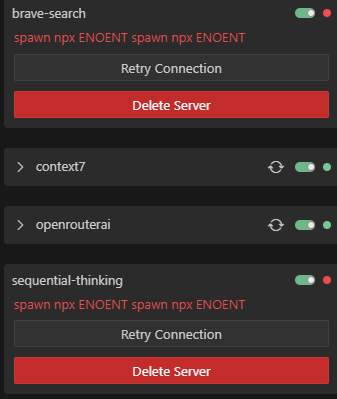SOLID Pattern Object Oriented Design and How to Use It in C#
- Enhances maintainability and scalability of applications.
- Guides developers in crafting robust software systems.
- Encourages extensible software architectures.
- Improves reliability and promotes clean design.
- Facilitates easier testing and mocking through abstraction.
Table of Contents
- Understanding SOLID Principles
- Single Responsibility Principle (SRP)
- Open/Closed Principle (OCP)
- Liskov Substitution Principle (LSP)
- Interface Segregation Principle (ISP)
- Dependency Inversion Principle (DIP)
- Conclusion
- FAQ
Understanding SOLID Principles
The SOLID acronym comprises five principles:
- Single Responsibility Principle (SRP)
- Open/Closed Principle (OCP)
- Liskov Substitution Principle (LSP)
- Interface Segregation Principle (ISP)
- Dependency Inversion Principle (DIP)
While these principles are applicable across various programming languages, they align exceptionally well with C# due to its robust type system and object-oriented capabilities. Let’s delve into each principle in detail.
Single Responsibility Principle (SRP)
Definition: A class should have only one reason to change, meaning it should only have one job or responsibility.
Implementation in C#:
Consider the following implementation where a class violates SRP by performing multiple roles:
// Bad example - multiple responsibilities
public class UserService
{
public void RegisterUser(string email, string password)
{
// Register user logic
// Send email logic
// Log activity
}
}
In contrast, adhering to the Single Responsibility Principle leads to a more maintainable structure:
// Better example - single responsibility
public class UserRegistration
{
private readonly EmailService _emailService;
private readonly LoggingService _loggingService;
public UserRegistration(EmailService emailService, LoggingService loggingService)
{
_emailService = emailService;
_loggingService = loggingService;
}
public void RegisterUser(string email, string password)
{
// Only handle user registration
var user = new User(email, password);
SaveUserToDatabase(user);
_emailService.SendWelcomeEmail(email);
_loggingService.LogActivity("User registered: " + email);
}
}
Benefits of SRP:
- Improved maintainability as each class has a distinct responsibility.
- Easier collaboration; team members can work on separate functionalities with minimal overlap.
Open/Closed Principle (OCP)
Definition: Software entities should be open for extension but closed for modification.
Implementation in C#:
Let’s assess a traditional approach that violates the OCP:
// Bad approach
public class AreaCalculator
{
public double CalculateArea(object shape)
{
if (shape is Rectangle rectangle)
return rectangle.Width * rectangle.Height;
else if (shape is Circle circle)
return Math.PI * circle.Radius * circle.Radius;
throw new NotSupportedException("Shape not supported");
}
}
By implementing the OCP, we can extend functionality without altering existing code:
// Better approach using OCP
public interface IShape
{
double CalculateArea();
}
public class Rectangle : IShape
{
public double Width { get; set; }
public double Height { get; set; }
public double CalculateArea()
{
return Width * Height;
}
}
public class Circle : IShape
{
public double Radius { get; set; }
public double CalculateArea()
{
return Math.PI * Radius * Radius;
}
}
// Now we can add new shapes without modifying existing code
Benefits of OCP:
- Encourages the development of extensible software architectures.
- Reduces the risk of introducing bugs to existing functionalities.
Liskov Substitution Principle (LSP)
Definition: Objects of a superclass should be replaceable with objects of its subclasses without affecting the correctness of the program.
Implementation in C#:
Let’s critique this implementation which violates LSP:
// Violation of LSP
public class Rectangle
{
public virtual int Width { get; set; }
public virtual int Height { get; set; }
public virtual int GetArea()
{
return Width * Height;
}
}
public class Square : Rectangle
{
public override int Width
{
get { return base.Width; }
set {
base.Width = value;
base.Height = value; // This breaks LSP
}
}
}
To adhere to LSP, we separate shape behavior into correct implementations:
// Better approach adhering to LSP
public interface IShape
{
int GetArea();
}
public class Rectangle : IShape
{
public int Width { get; set; }
public int Height { get; set; }
public int GetArea()
{
return Width * Height;
}
}
public class Square : IShape
{
public int Side { get; set; }
public int GetArea()
{
return Side * Side;
}
}
Benefits of LSP:
- Promotes a reliable hierarchy, ensuring placeholder objects work seamlessly in place of base class instances.
Interface Segregation Principle (ISP)
Definition: Clients should not be forced to depend on interfaces they do not use.
Implementation in C#:
This example showcases a common mistake by violating ISP:
// Violation of ISP
public interface IWorker
{
void Work();
void Eat();
void Sleep();
}
// Better approach with segregated interfaces
public interface IWorkable
{
void Work();
}
public interface IEatable
{
void Eat();
}
public interface ISleepable
{
void Sleep();
}
Benefits of ISP:
- Reduces side effects and promotes clean design, enhancing modularity.
- Developers work with specific interfaces relevant to their implementations.
Dependency Inversion Principle (DIP)
Definition: High-level modules should not depend on low-level modules; both should depend on abstractions.
Implementation in C#:
Examine this flawed approach under DIP:
// Violation of DIP
public class NotificationService
{
private readonly EmailSender _emailSender;
public NotificationService()
{
_emailSender = new EmailSender();
}
public void SendNotification(string message, string recipient)
{
_emailSender.SendEmail(message, recipient);
}
}
Implementing DIP effectively allows for a more flexible design:
// Better approach using DIP
public interface IMessageSender
{
void SendMessage(string message, string recipient);
}
public class EmailSender : IMessageSender
{
public void SendMessage(string message, string recipient)
{
// Email sending logic
}
}
public class SMSSender : IMessageSender
{
public void SendMessage(string message, string recipient)
{
// SMS sending logic
}
}
public class NotificationService
{
private readonly IMessageSender _messageSender;
public NotificationService(IMessageSender messageSender)
{
_messageSender = messageSender;
}
public void SendNotification(string message, string recipient)
{
_messageSender.SendMessage(message, recipient);
}
}
Benefits of DIP:
- Enhances the flexibility and reusability of code.
- Facilitates easier testing and mocking through abstraction.
Conclusion
Incorporating the SOLID principles in C# development results in several benefits, such as improved maintainability, enhanced testability, increased flexibility, better code organization, and reduced technical debt. As applications grow in scale and complexity, consciously applying these principles will contribute to producing robust, maintainable, and adaptable software systems.
By prioritizing SOLID principles in your coding practices, you won’t just write C# code— you’ll create software that stands the test of time.
If you’re interested in exploring further implementation examples, feel free to connect with me on LinkedIn or check out my GitHub. Happy coding!
FAQ
What are the SOLID principles?
The SOLID principles are five design principles that help software developers create more maintainable and flexible systems.
How does SRP improve code quality?
SRP enhances code quality by ensuring that a class has only one reason to change, making it easier to manage and understand.
What advantages does OCP provide?
OCP allows developers to extend functionalities without changing existing code, reducing bugs and improving code safety.
Can LSP help avoid bugs?
Yes, adhering to LSP promotes a reliable class hierarchy and helps to avoid bugs that can arise from unexpected behavior in subclasses.
Why is Dependency Inversion important?
DIP is crucial for reducing coupling and enhancing flexibility, making it easier to change or replace components without affecting high-level modules.


